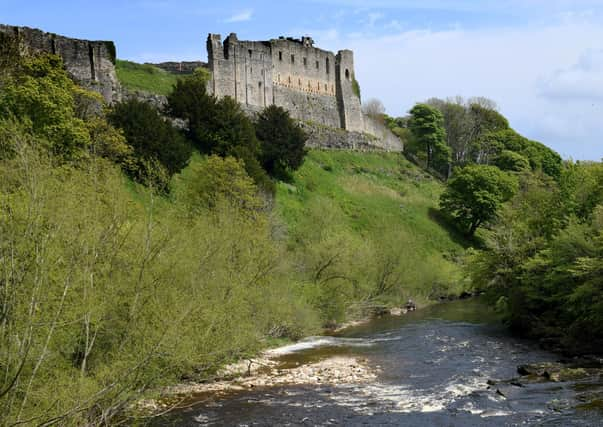Picture Post: Richmond Castle’s interesting history


It was originally called Riche Mount, ‘the strong hill’. The castle was constructed by Alan Rufus from 1071 onwards following the Norman Conquest of England, and the Domesday Book of 1086 refers to ‘a castlery’ at Richmond.
In the 12th century, his great-nephew Conan expanded the castle and built the keep. Although it was derelict by 1540, it was restored centuries later.
Advertisement
Hide AdAdvertisement
Hide AdThe property is the best-preserved early Norman castle in England and an important tourist attraction.
Richmond Castle consists of four main parts: a triangular main enclosure, an outer enclosure to the east, a keep at the northern corner of the main enclosure, and a small enclosure around the keep According to legend, King Arthur and his knights are sleeping in a cave underneath the castle.
It is said that they were once discovered by a potter named Thompson, who ran away when they began to awake. Another legend tells that a drummer boy was lost while investigating a tunnel, and that his ghostly drumming is sometimes heard around the castle
The River Swale which flows beneath the castle is a major tributary of the River Ure, which becomes the River Ouse, that empties into the North Sea via the Humber Estuary. The river gives its name to Swaledale, the valley through which it flows.
Advertisement
Hide AdAdvertisement
Hide AdThe river and its valley are home to many types of flora and fauna typical to the Yorkshire Dales. Like similar rivers in the region, the river carves through several types of rock and has features typical of both river and glacial erosion. The River Swale has been a contributory factor in the settlements that have been recorded throughout its history. It has provided water to aid in the raising of crops and livestock, but also in the various mining activities that have occurred since Roman times and before.
The river is said to be the fastest flowing in England.
Technical details: Picture taken on a Nikon D850 camera with a 24-70 mm len at 70mm with an exposrure of 1/400th sec at f 8 with an iso of 500.
Comment Guidelines
National World encourages reader discussion on our stories. User feedback, insights and back-and-forth exchanges add a rich layer of context to reporting. Please review our Community Guidelines before commenting.